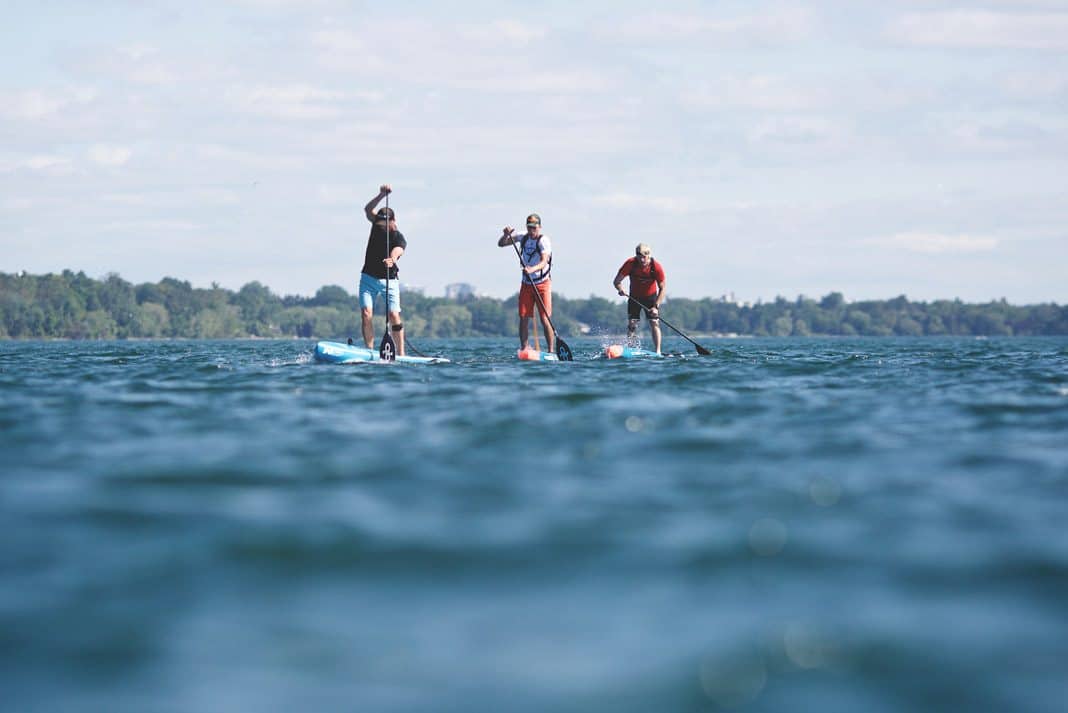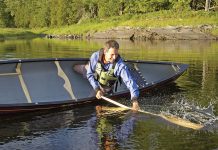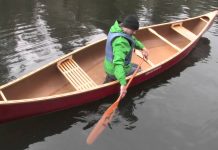There’s a scene in Barbarian Days, William Finnegan’s Pulitzer Prize-winning surfing memoir, when he witnesses two friends huck their mint-condition long-boards off a high cliff.
It’s 1968 and the shortboard revolution has transformed board design overnight. The goal was to use the insurance money from the “stolen” longboards to upgrade to the new design.
Why The SUP Resale Market Is About To Change
In the past decade, a similar quake in the paddleboarding industry hasn’t quite resulted in boards being sacrificed off cliffs, but it’s had a depressing effect on resale, particularly for race boards.
A recent listing on a Distressed Mullet online classified it had a lightly used 2017 Starboard All Star, one of the most popular race boards, selling for $1,000—less than 30 percent of its $3,399 retail price. Compared with the kayak and canoe market, where old boats sell for a healthy percentage of new, this is nuts.
The seller, an Eden, Utah-based paddler named Eric, reveals some of the factors at play. Like a lot of SUP racers, Eric likes to be on the latest model because board designs are constantly changing. In the traditional paddling marketplace, a good canoe or kayak design would retain its resale values for years, even decades.
The SUP industry is more like the ski, bike and automotive sectors.
Each production cycle brings distinct models promising to be faster, lighter, more stable and more durable. Eric buys his boards slightly used from dealers or reps—he picked up his 2017 as a demo from a California retailer for $2,200—hangs onto them for a year and then resells the boards before the models depreciate too much.
This way I never get stuck with a board three or four years old worth almost nothing. I can get something out of it and put it towards a new board.
Being a brand-new sport, paddleboard racing designs have changed markedly over the past few years, creating a kind of arms race in the top echelons, not unlike the surfboard design shift in 1968.
Five years ago, popular race models were 27 inches wide. Today’s top paddlers are on 21-inchers. The racing market is also relatively small and, anecdotally, appears to have plateaued. Big events like the Pacific Paddle Games and the Carolina Cup are seeing reduced numbers after an initial surge in participation.
Steve Martin, owner of the shop Boardsports down the street from me in Toronto, Ontario, estimates the total population of avid SUP racers in his home province is 200, and the entire market for race boards is probably 30 annually– “and very few of those are sold at retail.”
The SUP industry is fairly lax when giving out pro deals, according to Doug Hopkins, president of Boards & More Inc., which distributes Fanatic SUPs in North America.
“The brands tend to sell a lot of race boards direct to people they perceive are valuable ambassadors to their brand because they want to see a lot of boards on race courses,” says Hopkins. “The manufacturers are making good money on the deal because they’re selling it directly to the racer for a similar price they would have sold it to a dealer. I think this was overdone in the past few years. And those people getting good deals on the boards were able to flip them and get new ones and flood the market.”
On my home waters, there’s probably at least half-a-dozen sponsored paddlers reselling two boards a year into a market of 200 paddlers. This alone is enough to saturate the local market with discount boards over a few years. Even if every racer replaces his or her board in that time, the used board market quickly bot- toms out. Selling a three-year-old board becomes virtually impossible.
Since race boards are so specialized, there’s a schism between what racers want to paddle and what can be sold to non-racers—even with recreational paddlers increasingly being steered towards sleeker touring boards with displacement hulls and pointed noses. The standard race width is now about 21 to 24 inches, whereas so-called performance touring models start around 27 inches, with 29 inches being the most popular, according to Hopkins.
“If you’re trying to sell a used race board your market is limited to racers and they tend to want the latest boards,” says Hopkins. “They know exactly what they want and it’s not a used one from two years ago, or even last year.”
Another factor is the SUP industry’s booming growth over the past decade, which saw boards overproduced, forcing inventory clearouts, which further depressed the market.
Boardsports, for example, has new race boards going back to 2013, some listed for nearly a quarter of the original price; a new 2014 Naish Javelin LE 14’ x 26” is marked down from $5,400 to $1,499.
Outside of racing, the recreational SUP resale market isn’t quite so bad, but it’s still prey to many of the same factors—too many competing brands, the influx of cheap boards from big box stores, and an overproduction of boards due to poor sales forecasting.
“There’s a lot of product out there that isn’t very expensive, which is driving down the end user price,” says Charlie Burwell, general manager for Naish.
However, the market should firm up soon.
Designs are not changing as quickly. “Most of the major brands are down to subtle improvements,” says Burwell— boards aren’t likely to get any narrower. And better industry forecasting will eliminate the glut and overproduction of boards.
“That’s definitely going to be cleaned up and that might be one of the biggest influencers out there. It takes a while. Things don’t happen overnight. But as brands go out of business, stores go out of business, brands get more careful about what they build and the technology slows down, it will all come under control,” predicts Hopkins.
In the meantime, now is a great time to buy a SUP.
The entry point to high- end race equipment has never been lower, hopefully encouraging new entrants. And maybe someday, all the used SUP boards out there will realize their true value, like in Barbarian Days, when Finnegan admits he has no idea if his friends’ insurance scam worked, but he knows those doomed longboards, “simply left in a garage, would be worth thousands of dollars today.”
Author: Tim Shuff










Just look at what happened to windsurfing, from the “one” design that worked for everyone and made it a very inclusive sport competitively at the time, to boards with such low volume that the entire sport became “exclusive”and appealed to a very small market. The same has happened to the SUP race scene. BOP, Pacific Paddle Games et al seen rapid growth and participation in the early days because everyone could compete and have fun, no longer the case. The sport just edged its way out of the mainstream market. Too bad. It was a fun ride:)
This happend in the kayak playboat world. Something Brad Nelson at Starrk Moon Kayaks said that I liked was”they’re like grapefruits, they last for a while but once they get moldy they’re worthless. When kayak rodeo happened, the point system for the evolving sport drove design. When flat spinning was worth a lot of points, certain designs won big even though they might not have been good at much else. A year later when swapping ends got the points those boats from last year were looking pretty moldy. That sport, like SUP racing has a lot of peer and competion winner driven sales. That why Conner Baxter won Molikai on an SIC board painted to look like a Starboard. So, yes used raceboards don’t sell for much. Probably never will because the market is so small. And as long as local and regional racers think they can be competitive on a board that is too narrow for their skills there will be a lot of people not being fast because they are in the water instead of on the board. In the end the competition market is such a microscopic part of board sales, this whole subject only has meaning to a very tiny part of the SUP market.